Table of contents
The cultivated button mushroom ( Agaricus bisporus ), also known as the two-spored chanterelle, is one of the most well-known edible mushrooms. It is also very tasty raw and is often available in organic quality .
Using cultivated mushrooms in the kitchen:
The raw cultivated mushroom is available through cultivation in different colors (white or brown) and sizes (button-shaped or with a wide-open cap). Its taste is mild and nutty, its smell mushroomy, slightly nutty and occasionally described as marzipan-like.
There are many different ways to prepare cultivated mushrooms. They can be finely sliced, chopped, roasted, steamed, deep-fried, grilled and boiled whole. Cultivated mushrooms go well with all kinds of vegan pasta dishes, rice dishes (e.g. risotto), in vegetable stir-fries, Asian dishes, casseroles and soups. Cultivated mushrooms also taste excellent in a mushroom pan with other mushrooms (e.g. giant button mushrooms , chanterelles , king oyster mushrooms , shiitake mushrooms etc.) or stuffed with vegetables. Mushrooms can also be pickled in vinegar (e.g. white wine vinegar ) - together with a little salt ,pepper , garlic and herbs (e.g. rosemary , marjoram , thyme etc.).
The cultivated mushroom goes well with a little salt ,pepper and parsley . But the mushroom also tastes very good with more exotic spices (e.g. curry , paprika powder or coriander ).
Can you eat mushrooms raw? or Can you eat brown mushrooms raw? White and brown cultivated mushrooms can be eaten raw. Raw mushrooms taste great in a raw salad or with a variety of vegetables and dips.
Vegan recipe for a mushroom and vegetable stir-fry with rice:
Ingredients (for 2 people): 150 g basmati rice , 400 g brown mushrooms (organic), 400 g chickpeas (cooked), 200 g broccoli , 1 small onion , 1 clove of garlic, some salt and pepper, a little rapeseed oil .
Preparation: Cook the basmati rice according to the instructions. Peel and finely chop the onions and garlic. Clean the mushrooms (raw) with a kitchen towel and halve them. Divide the broccoli into florets. Drain the chickpeas and rinse briefly. Heat a little rapeseed oil in a pan and sauté the onion and garlic for about 2 minutes. Add the broccoli and cultivated mushrooms and fry briefly. Add the chickpeas. Fry everything until golden brown and season with a little salt and pepper. Arrange the vegan vegetable pan with the cooked basmati rice and serve.
Vegan recipes with cultivated mushrooms can be found under the note: " Recipes that have the most of this ingredient ".
| Not only vegans or vegetarians should read this: Vegans often eat unhealthily. Avoidable nutritional mistakes . |
Shopping - where to buy cultivated mushrooms?
Most grocery stores offer fresh cultivated mushrooms all year round. Therefore, cultivated mushrooms can be bought raw in supermarkets (e.g. Coop , Migros , Denner , Volg , Spar , Aldi , Lidl , Rewe , Edeka , Hofer etc.) and organic supermarkets (e.g. Alnatura and Denn's Biomarkt ), often in organic quality (bio). Cultivated mushrooms can also be found at weekly markets and in online shops. The term Portobello mushrooms is usually used in the trade to refer to opened, i.e. fully grown, brown mushrooms.
Found in the wild - Season:
Cultivated mushrooms grow mainly in temperate latitudes in the northern hemisphere. 1 Cultivated mushrooms can now also be found as wild cultivated mushrooms in parks and gardens all over the world. In nature, the saprobiotic mushroom can be found from early summer to late autumn ( season ) - on nutrient-rich substrates such as compost and manure. 2 Therefore, the mushrooms also grow well on meadows with horse or chicken manure. 3
Storage:
Cultivated mushrooms can be stored in the refrigerator for two to three days, preferably in a paper bag so that air can reach the mushrooms. Since cultivated mushrooms easily take on the taste and smell of other foods, they should not be stored next to strong-smelling foods. Cultivated mushrooms can also be frozen without any problem (they will last for around 1 year), but they are best eaten cooked afterwards: after thawing, mushrooms lose their firmness and are therefore suitable for sauces, stews or soups.
Cooked mushroom dishes should not be kept in the refrigerator for more than a day and should be reheated well before eating.
Mushroom ingredients - nutritional values - calories:
The energy content of cultivated mushrooms is 22 kcal per 100 g, of which 3.3 g are carbohydrates. Fat is barely present at 0.34 g/100g. Cultivated mushrooms contain 3.1 g/100g protein. 4
Do mushrooms contain vitamins? Cultivated mushrooms contain 16 µg/100g of biotin (ex vitamin B 7 , H) , which makes up 32 % of the daily requirement. Raw oyster mushrooms (16 µg/100g) and raw shiitake mushrooms (15 µg/100g) contain a similar amount. Dried shiitake mushrooms contain around 5 times as much biotin (75 µg/100g), but they usually have to be soaked in water and cooked before consumption.
Theriboflavin (vitamin B 2 ) content in cultivated mushrooms is 0.4 mg/100g. This content covers 29% of the daily requirement. Raw giant mushrooms (0.4 mg/100g) and raw porcini mushrooms (0.37 mg/100g) have similar riboflavin contents. Dried parsley contains particularly high levels of this vitamin (2.4 mg/100g). 4
Cultivated mushrooms contain 1.5 mg of pantothenic acid (vitamin B 5 ) per 100 g (25% of the daily requirement). Raw shiitake mushrooms (1.5 mg/100g) and giant mushrooms (1.5 mg/100g) have a similar amount of pantothenic acid. Raw porcini mushrooms (2.7 mg/100g) are considered to be foods with a fairly high vitamin B 5 content. 4
You can find all the ingredients of the cultivated mushroom, the coverage of the daily requirement and comparison values with other ingredients in our nutrient tables. In the article Nutrients explained you will get a detailed insight into the topic. the CLICK FOR under the ingredient picture.
Health aspects - effects:
Mushrooms are known to contain nutrients such as proteins, lipids, fibers, minerals and vitamins, which make them a healthy food. 5 The extracts of Agaricus bisporus and its bioactive compounds exhibit antioxidant, antimicrobial, hypoglycemic and anti-inflammatory activities. In addition, cultivated mushrooms are used as a remedy against cancer, diabetes, cardiovascular diseases and immune system disorders. 5,8
Some large mushroom farms (eg in the USA, Ireland, the Netherlands and Australia) expose freshly cultivated mushrooms to UV radiation in order to significantly increase the concentration of vitamin D 2 . The increased content is relatively stable during storage and cooking. Cultivated mushrooms treated in this way are therefore good sources of vitamin D 2 , which is important for the absorption of calcium from food, among other things. 6
Due to its low calorie content and its satiating effect, the cultivated mushroom is well suited to a figure-conscious diet. 7
Dangers - intolerances - side effects:
Should you eat mushrooms raw? or Are mushrooms healthy raw? Some studies have shown that raw cultivated mushrooms, along with some other edible mushrooms, contain a small concentration of carcinogenic ingredients (hydrazine derivatives such as agaritine). However, research has found that these heat-labile compounds are significantly reduced after cooking. 8 It is therefore better to consume cultivated mushrooms raw in small quantities.
According to a study, wild cultivated mushrooms tend to accumulate heavy metals in their tissue. The extent of the accumulation depends on various factors (e.g. soil properties, heavy metal concentration in the soil, etc.). The authors of the study therefore recommend that people exercise caution when eating collected mushrooms and consume them in moderation. 9
Folk medicine - natural medicine:
In traditional Chinese medicine ( TCM ), the mushroom is known for its ability to regulate Qi circulation. The cultivated mushrooms are also said to help eliminate heat, toxins and mucus from the body. 10
Occurrence - origin - ecology:
Romans probably consumed the mushroom as a delicacy. The beginning of cultivation seems to have been a coincidence: melon growers in the 17th century noticed the growth of mushrooms on the manure on which they were growing melons. The first cultivation took place in Paris during the time of Louis XIV . The method of cultivation quickly spread to other European countries and later became successful worldwide. 2
Growing in the garden:
Cultivated mushrooms thrive in the dark. You can therefore grow them yourself in the cellar. The cellar should have a constant temperature of around 15-20 °C. The easiest way to grow your own mushrooms is with fully prepared boxes with cultivated mushroom spawn on a suitable substrate (e.g. chopped straw, wood, etc.). You can buy these from specialist retailers (mushroom cultivation kit). Then you just have to keep the cultivated mushroom culture moist and harvest the growing mushrooms.
Cultivation - Harvest:
Cultivated mushrooms are mostly grown in specially designed tunnels with climate control. After 3-6 weeks, the mushrooms reach the desired size. Compostable materials, e.g. a mix of straw, gypsum and chicken, cow or horse manure, serve as a cultivation substrate for the cultivated mushrooms. 2 The harvest is done by hand. This ensures that the mushrooms come out of the bed without a lot of soil sticking to them. After harvesting, the mushrooms are sorted according to quality, weight and size.
Ecological aspects:
In organic farming (bio), organic substrate of ecological origin is inoculated with mushroom mycelium. The organic substrate is not treated with chemical pesticides. In organic farming, the mushrooms grow at milder temperatures, which counteracts the proliferation of pests, but also slows down growth compared to conventional farming . A positive side effect is that the mushrooms store less water and therefore develop firmer flesh and a more intense aroma. 11
Danger of confusion with cultivated mushrooms:
The cultivated mushroom ( Agaricus bisporus ) can be confused with other types of mushrooms, such as the meadow mushroom ( Agaricus campestris ), compost mushroom ( Agaricus cappellianus ) or city mushroom ( Agaricus bitorquis ), which is not a problem as these are edible. However, it should not be confused with the poisonous carbole fungus ( Agaricus xanthodermus ) and the deadly poisonous death cap mushroom ( Amanita phalloides var. alba ). 3
Industrial production:
The cultivated mushroom is the most widely cultivated edible mushroom in the world. The annual production of raw mushrooms amounts to around two million tons.
Where are cultivated mushrooms grown? Larger quantities of cultivated mushrooms are grown on substrate, particularly in North America, Europe and China. 2
General information about cultivated mushrooms:
The mushroom Agaricus bisporus belongs to the family of mushroom relatives and to the group of reddening Agaricus species. This reddening reaction affects the flesh, but is only slight in cultivated mushrooms. The position of the ring (small and ascending) is another characteristic of cultivated mushrooms. 1
Alternative names:
The cultivated mushroom (cultivated mushroom, cultivated mushroom, mushroom cultivation) has numerous alternative names: two-spored mushroom, two-spored chanterelle, white mushroom (white mushroom), brown mushroom, white chanterelle, brown chanterelle, brown cultivated chanterelle, white cultivated chanterelle, cultivated mushroom, garden chanterelle, cultivated mushroom, stone mushroom, porcini mushroom, Paris mushroom, Champignon de Paris, Portobello mushroom (Portobello mushroom) etc.
Latin synonyms are: Agaricus hortensis and Agaricus brunnescens (not officially recognized 13 and erroneously also found as Agaricus brunnecens ).
In English it is called common mushroom, button mushroom, white mushroom, table mushroom, portobello (portabella, portobella, portobello mushroom), cremini mushroom (pl. cremini mushrooms) or crimini mushroom, Swiss brown mushroom, Roman brown mushroom, Italian brown, Italian mushroom, chestnut mushroom, cultivated mushroom. The plural words portobello champignons, portobello mushrooms or portobellos are also known.
Keywords for use:
A study investigated the potential of mushroom substrate (pasteurized organic material left over after mushroom harvesting) from the cultivation of cultivated mushrooms as a cost-effective bioremediation agent for the removal of various heavy metals from polluted water. The study describes this process as an efficient, economical, environmentally friendly and sustainable biotechnology for the elimination of environmentally harmful contaminants. 12
Literature - Sources:

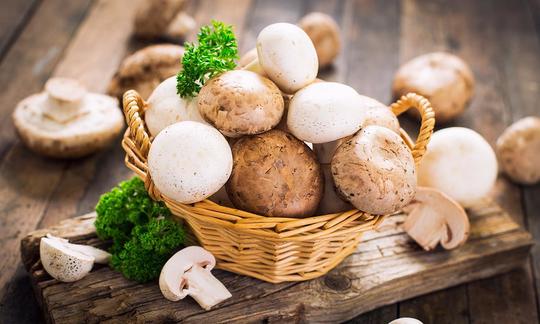

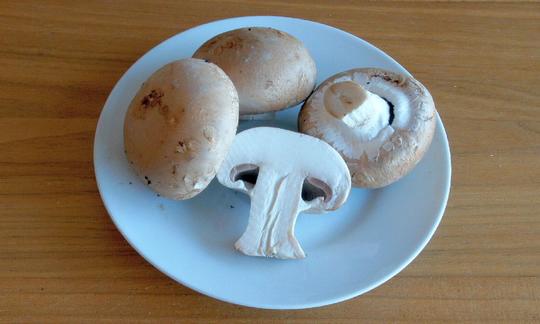

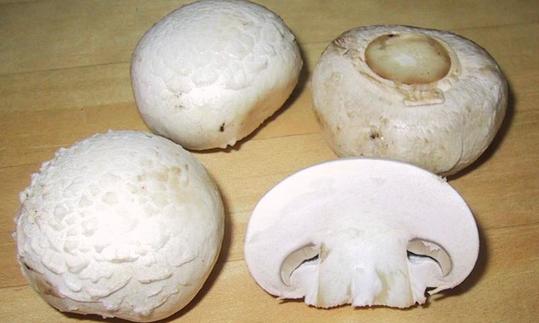

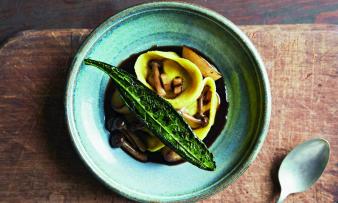

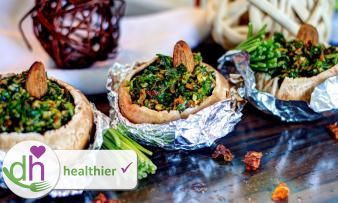





Comments